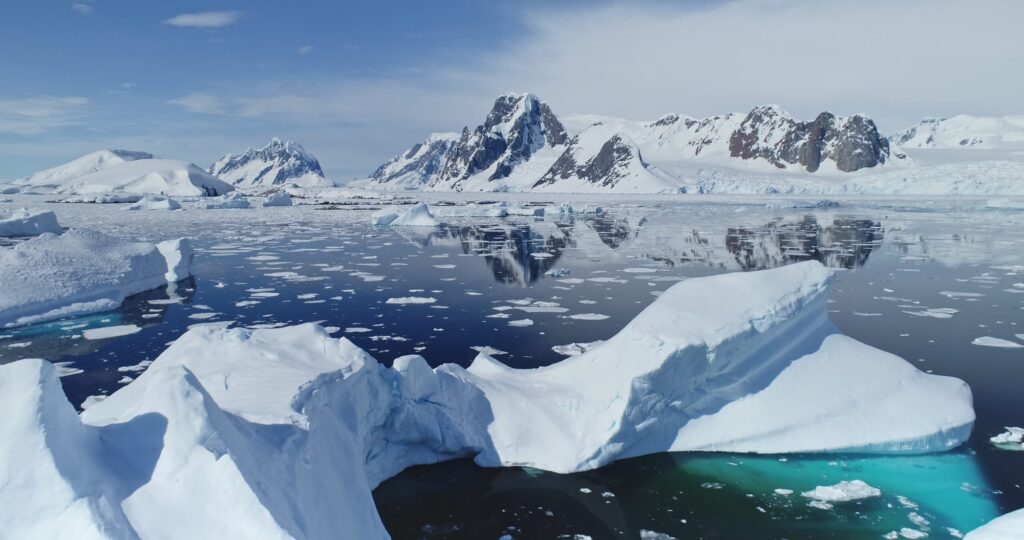
Between 800,000 and 430,000 years ago, Earth experienced a series of moderate warm periods known as “lukewarm interglacials.” During these times, the air over Antarctica remained cold, and carbon dioxide levels were 30 to 40 parts per million lower than in later interglacials. The muted nature of these warmings has long puzzled climate scientists. Now, new research suggests that the answers lie deep beneath the Southern Ocean, offering insights into Earth’s ancient climate rhythms.
A Window Into Ancient Waters
An international research team, led by Dr. Huang Huang, an assistant researcher at the Laoshan Laboratory in Qingdao, China, has employed innovative techniques to peer into the past. The team studied a ferromanganese crust collected from Haxby Seamount off Antarctica’s Pacific margin. Buried nearly a mile beneath the seafloor, this mineral crust acts as an oceanic time capsule, recording changes in seawater chemistry over hundreds of thousands of years.
Using a two-dimensional laser ablation technique, researchers examined tiny fragments of the crust to measure the isotopic composition of lead. This method involves vaporizing minute pieces of material and analyzing the vapor for its elemental and isotopic structure.
“This new laser technology opens completely new possibilities for climate reconstruction,” said physicist Dr. Jan Fietzke, head of the laboratory for laser measurements at GEOMAR. “It will allow us to better understand the role of the Southern Ocean in the global carbon cycle and future climate trends.”
Reading the Ocean’s Chemical Diary
By tracking lead isotope ratios, specifically 208Pb/206Pb and 206Pb/204Pb, scientists reconstructed ocean mixing and water mass transport over the last 800,000 years. These isotopic fingerprints distinguish different water sources. Antarctic Bottom Water, formed near the icy continent, has a unique isotopic signature compared to deeper waters from the Pacific.
The evidence was clear: during warm interglacials, the 208Pb/206Pb ratios were higher than in later interglacials, indicating less Antarctic Bottom Water entering the deep ocean. This suggests a more compartmentalized, or “stratified,” ocean with deep waters separated from surface waters.
Conversely, colder glacial periods showed greater mixing, reflected by lower isotope values. Since lead in the sea has a relatively short half-life, changes preserved in the crust reflect nearby changes rather than global processes that can obscure climate signals in sediments.
The Carbon Connection
Why would a more stratified ocean cool the Earth? The answer lies in how carbon is exchanged between the ocean and atmosphere. Deep ocean waters hold vast reserves of dissolved carbon dioxide. When vertical mixing decreases, this carbon remains trapped below, minimizing the amount released into the atmosphere.
Researchers estimate that reduced mixing during warm interglacial periods kept atmospheric CO2 levels roughly 30–40 ppm lower than in later warm periods. Model experiments suggest that combined factors—greater stratification, thicker Antarctic sea ice, and reduced upwelling—could reduce CO2 levels by about 36 ppm, closely matching the isotope record.
This pattern reversed after the Mid-Brunhes Event, around 430,000 years ago, when interglacials became longer and warmer. Since then, Earth’s climate has seen higher CO2 concentrations and more vigorous ocean mixing, fundamentally altering the Southern Ocean’s role in stabilizing global temperatures.
After the Cause of Stratification
Several factors may have contributed to the deep Southern Ocean’s stratification during ancient warm periods. Lower Antarctic air temperatures and expanded sea ice likely formed denser bottom waters, creating a steep density contrast that hindered vertical mixing. Slower upwelling reduced the circulation that would otherwise bring nutrient-rich deep water to the surface.
Reduced biological productivity—less sea life fixing carbon through photosynthesis and sinking to the ocean floor—may have also played a role. Together, these shifts helped “lock in” carbon in the deep ocean, removing it from the atmosphere and slowing global warming.
Strengths and Outstanding Questions
The study’s precision and consistency are notable, thanks to the ferromanganese crust’s formation in open ocean conditions with limited sediment contamination. Crossdating two portions of the same crust yielded nearly identical isotopic histories, bolstering confidence in the findings.
However, some uncertainties remain. Dating the crust beyond 450,000 years is challenging due to its slow growth rate—about a millimeter every million years. Researchers use uranium and thorium isotopes for dating, but natural variations can introduce slight errors. Nonetheless, the trends align with independent observations from sediment cores and other Southern Ocean isotope records.
The results support the growing belief that the Southern Ocean, rather than the Atlantic, was largely responsible for CO2 changes during the lukewarm interglacials. While the Atlantic overturning circulation remained stable, changes in Antarctic waters reshaped the map of carbon storage in deep waters.
Lessons From an Ancient Climate Shift
This discovery is relevant to today’s climate concerns. As global temperatures rise and Antarctic sea ice melts, the Southern Ocean’s ability to absorb carbon could diminish. A less stratified ocean would allow more deep carbon to surface, enhancing the greenhouse effect.
“Our data show for the first time that more intense stratification of the Southern Ocean was a major factor in the relatively cold interglacials leading up to the Mid-Brunhes Event,” said Dr. Huang. “Discovering these processes helps us value the influence ocean structure change can have on long-term climate.”
The study not only resolves a long-standing mystery in paleoclimate science but also highlights the interconnectedness of Earth’s oceans and atmosphere. Even modest shifts in water mixing thousands of meters below the surface can have profound effects on the entire climate system.
Practical Implications of the Research
These findings serve as a stark reminder for today. If warming continues to disrupt sea ice and ocean layering, the deep ocean’s carbon storage ability will be compromised, accelerating climate change by recycling more CO2 into the atmosphere.
Beyond climate forecasting, Huang’s laser method could revolutionize how scientists reconstruct ancient habitats. By reading the chemical “pages” within mineral crusts, researchers can explore how ocean circulation patterns evolved over hundreds of thousands of years—knowledge that could improve climate models and guide global carbon management strategies.
Research findings are available online in the journal Nature Communications.
Related Stories:
- Southern Ocean shows troubling signs of a growing climate emergency
- The Southern Ocean captures 25% more CO2 than previously thought
- Hidden ocean currents play a crucial role in global weather, study finds
Like these kinds of feel-good stories? Get The Brighter Side of News’ newsletter.







